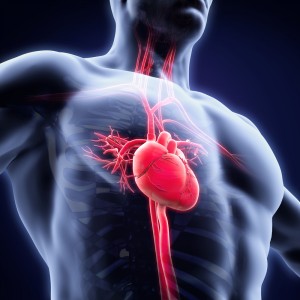A new research project developed at the Weizmann Institute of Science is providing new insight into the mystery of why mammalian hearts fail to regenerate, reporting the possibility of altering this fate in adult mice models. The study is published in Nature Cell Biology.
When a heart attack occurs, heart muscle cells die and a scar tissue area develops, paving the way for heart failure. Cardiovascular diseases represent a major cause of death worldwide, as heart cells, the building blocks of our most vital organ, are not renewed, contrary to blood, skin or hair cells.
Study author Dr. Eldad Tzahor believed the answer to this regeneration problem could be associated with embryonic development of the heart. It was already established that the ERBB2 protein, involved in several kinds of cancer, has a crucial role in heart development. ERBB2 is a receptor that transmits messages received from the outside environment into the cell. The ERBB2 protein usually works together with the binding growth factor Neuregulin 1 (NRG1), to successfully transmit such messages. In fact, NGR1 is already being tested to treat heart failure in clinical trials.
Dr. Gabriele D’Uva, who works with Dr. Tzahor, is committed to understanding exactly how ERBB2 and NRG1 are involved in the heart regeneration process. In mice, heart cells can be regenerated on the day animals are born but after 7 days this capacity is already lost. Dr. D’Uva and her team observed that when cardiomyocytes [a type of heart cells] are treated with NRG1 they keep proliferating upon birth, but this effect dramatically decreases after a week, even when administering large doses of NRG1. Moreover, researchers observed this effect is dependent on the concentration of ERBB2 on cardiomyocytes’ membranes.
The team created mice genetically deficient for cardiomyocyte’s ERBB2 expression, resulting in animals with dilated cardiomyopathy, a condition in which the walls of the heart are thin and balloon-like. The results showed that cardiomyocytes without ERBB2 do not divide even when NRG1 is present. Upon ERBB2 reactivation, high proliferation of cardiomyocytes was observed along with hypertrophy [excessive growth] causing lack of space for blood to enter cells. Dr. Tzahor noted in a press release, “Too little or too much of this protein had a devastating impact on heart function.”
The team found they could activate ERBB2 for a short period of time, obtaining almost a complete heart regeneration in a few weeks. “The results were amazing. As opposed to extensive scarring in the control hearts, the ERBB2-expressing hearts had completely returned to their previous state,” said Dr. Tzahor.
It seems cardiomyocytes can revert to an earlier form between the embryonic and the adult cell: ERBB2 takes cells a step back and stops its activity, promoting the regeneration process.
Additionally, the team tried to understand which proteins could also respond to NRG1, “ERBB2 is clearly at the top of the chain. We have shown that it can induce cardiac regeneration on its own. But understanding the roles of the other proteins in the chain may present us with new drug targets for treating heart disease,” noted D’Uva.



